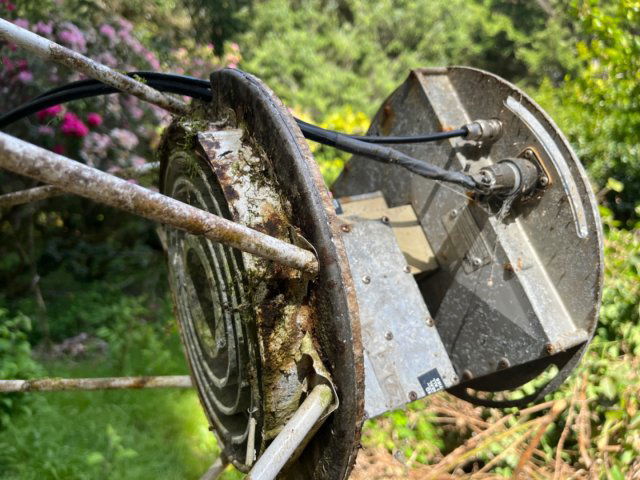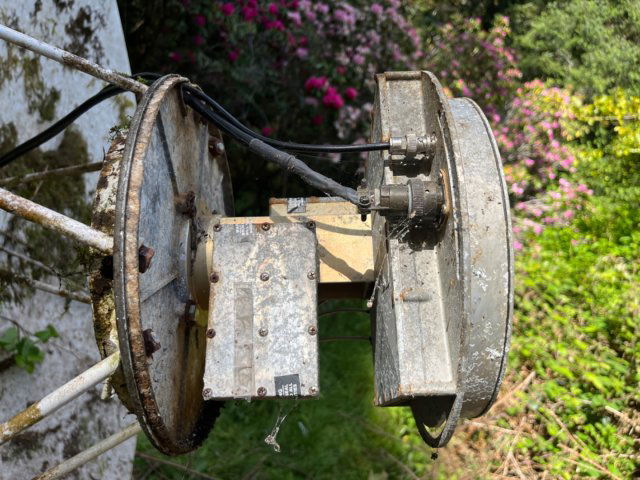I
I had previously tried hitting it with a rubber hammer; this was ineffective and dented the cover.

In the apparently unlikely case someone finds this when googling how to remove the cover - I sprayed it with wd-40, let it sit for a few hours and then hammered the tip of a thin flat screwdriver into the gap and twisted. The gap opened up a little so I went around the circumference inserting and twisting the screwdriver until the gap was about an eighth inch all around. Then I could pull the cover off by hand.Removing the feed horn cover is very simple. Merely remove the center screw and pull it off…. Not. 45 years of entropy has left it very comfortable where it is. Should I spray it with something?
This is a lot more fun than the stuff I should be doing,
I had previously tried hitting it with a rubber hammer; this was ineffective and dented the cover.





